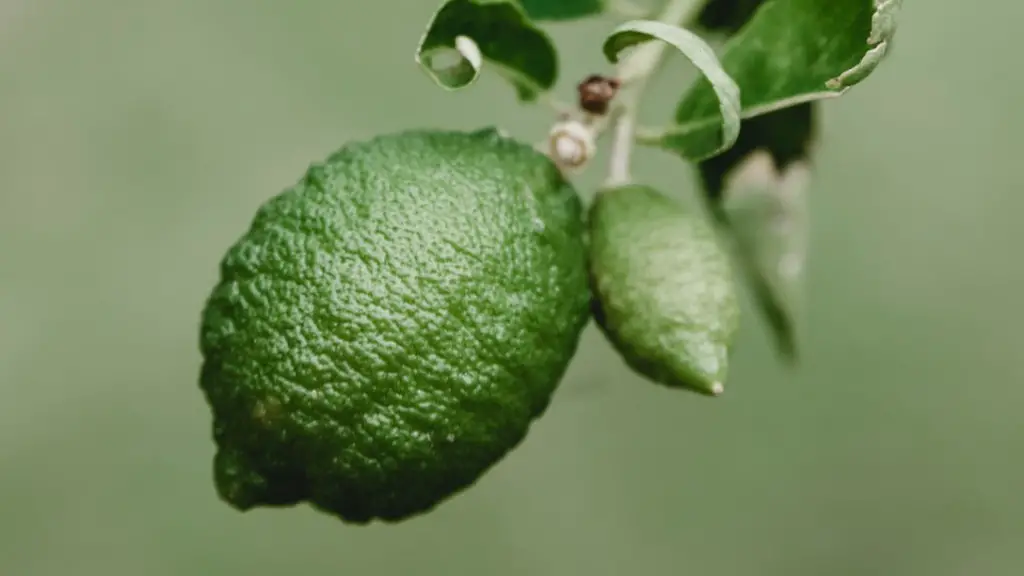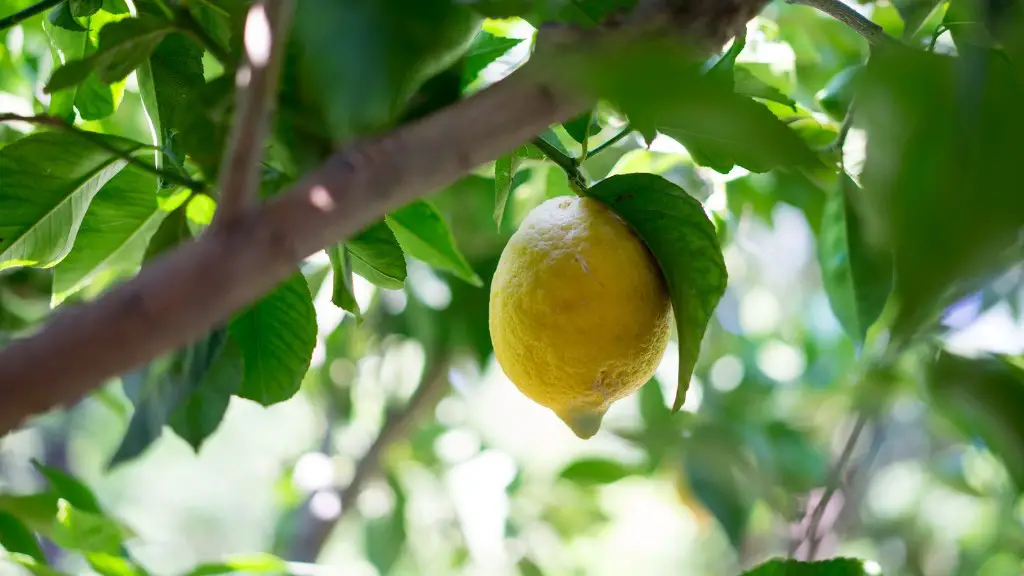How do you grow an Avocado Tree from the Seed?
Avocado trees can be grown from the seed. According to the University of California Agriculture and Natural Resource, it is the most common way to start an avocado tree. This growing technique requires minimal effort and care, but it may take anywhere from six to eighteen months to grow a mature tree.
It is a simple process to grow an avocado tree from the pit. First, rinse and dry the pit, then use a toothpick to make four evenly spaced holes in one end of the pit. Once the holes are made, fill a bowl or glass with fresh water. Next, place the pit into the water with the indentations facing the surface. Make sure that only the bottom of the seed is submerged and the holes and rest of the seed remain exposed.
The bowl or glass should be placed in indirect sunlight, or in an area with plenty of bright light, and replaced with fresh water when needed. Change the water daily as this will help to prevent mold growth, and in about two weeks the seed will start to split and a stem, roots and leaves will emerge.
Caring for your Avocado Tree
Once the stem and roots become established, you will need to transplant the avocado seed into a bigger pot with drainage holes. Use a well-draining potting soil, such as a five-to-one mix of potting soil and perlite, to ensure your avocado tree is getting the proper amount of oxygen. The seed should be placed in the potting mix just high enough to support the stem.
During spring, summer and fall, water your avocado tree when the top three to four inches of soil is dry. Reduce waterings during the winter months, but make sure the soil is not completely dry before you water again. Fertilize your avocado tree with a slow-release fertilizer twice a year, during the spring and summer months.
Once your avocado tree matures, it should be pruned twice a year to promote good air circulation and strong branch structure. During winter months, prune the tree for shape and to remove any weak or dead branches. During the summer months, you can prune the tree to encourage new growth and enhance fruit production.
Growth and Harvesting
Growth rate depends on weather and climate conditions; however, an avocado tree can typically reach a mature height of fifteen to twenty-five feet within four to six years. The tree should produce its first crop of fruit within a year or two after it blooms, but it will not reach full production until it matures and reaches its full height. Avocados are generally ready to be harvested five to eight months after bloom.
Avocados typically weigh five to eight ounces, but some may weigh up to a pound. When ready to harvest, the fruit will be green and slightly soft to the touch. They should not be picked until the stem easily separates from the fruit. The harvested avocados can be refrigerated for up to two weeks or used immediately.
Common Issues
Once your avocado tree is established and begins to bear fruit, there are a few common issues you should keep an eye out for. Keep an eye out for leaf-spots, which can be caused by water collecting in the center of the tree and create brown lesions on the leaves. Spraying the tree with a fungicide may help to prevent leaf-spots.
Mites, aphids and scales can also be a problem. Regular application of a soapy water solution is the best way to protect your tree from these insects, as they can feed on your fruit and foliage, reducing productivity and vigor. Allowing your avocado tree to dry out can cause it to drop leaves, too much water can cause root rot, and too much fertilizer can lead to nutrient burn, so be sure to follow the suggested watering and fertilizer guidelines.
Types of Avocados
There are two main types of avocados grown in the United States: Hass and Fuerte. Hass avocados are preferred for their rich nutty flavor, creamy texture and higher yield. The Fuerte avocado is a good choice for those who prefer a less buttery taste. Both types of avocados will grow on the same tree, but the avocado crop will vary from region to region.
For those looking for a unique variety, there are some rare avocado varieties available such as the pinkerton, maluma and bacon avocados. Each type has its own flavor profile and texture, and they can be found in specialty markets in some areas.
When it comes to growing an avocado tree, some patience and perseverance are necessary. Even though it takes some time to get your new tree up and running, the reward of fresh and delicious homegrown avocados make it all worth it.
Colors of the Fruit
Although it may be impossible to predict the exact size and shape of an avocado fruit, the color of the fruit can be estimated. Depending on the variety, avocados will turn yellow, pink, purple or black when they are ripe. While yellow and black are the most common fruit colors, avocados can also take on an orange hue as they mature.
In addition to their size and color, the skin of an avocado can also vary greatly. The skin may become paper thin during ripening, or it may remain very thick and leathery. Generally, the thicker the skin, the higher the level of oil content in the fruit. However, some varieties like the hass avocado have a thick skin even when ripe.
The flavor of an avocado depends on how ripe it is when it’s consumed. If you pick an avocado that is too hard, it may taste bitter or mealy. On the other hand, an avocado that is overripe will taste very buttery, even if its skin is still green.
Growing Tips
To give your avocado tree the best chance at success, it is important to choose the right location for planting. Avocado trees typically thrive in full sun, with six to eight hours of direct sunlight per day. It is also important to plant your tree in well-draining soil, as this will help to keep it healthy and, in turn, bear fruit.
As the tree matures, you should provide some kind of support structure to help keep the branches from breaking in heavy winds. This support structure should not encumber the tree and should allow for plenty of sun and runoff. Additionally, it is important to keep up on the occasional pruning, as this will maintain the size and shape of your tree, as well as maximize fruit production.
When it comes down to it, growing an avocado tree from a seed can be an incredibly rewarding experience. Despite its lengthy process, the end result of having fresh, home-grown fruit is unbeatable. By providing your new avocado tree with the proper care, you should be able to enjoy a bountiful harvest for years to come.



